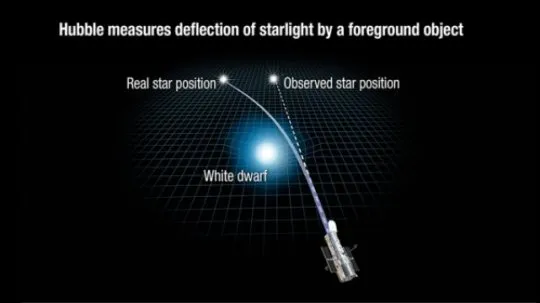This illustration reveals how the gravity of a white dwarf star warps space and bends the light of a distant star behind it. White dwarfs are the burned-out remnants of normal stars. The Hubble Space Telescope captured images of the dead star, called Stein 2051 B, as it passed in front of a background star. During the close alignment, Stein 2051 B deflected the starlight, which appeared offset by about 2 milliarcseconds from its actual position. This deviation is so small that it is equivalent to observing an ant crawl across the surface of a quarter from 1,500 miles away. From this measurement, astronomers calculated that the white dwarf's mass is roughly 68 percent of the sun's mass. Stein 2051 B resides 17 light-years from Earth. The background star is about 5,000 light-years away. The white dwarf is named for its discoverer, Dutch Roman Catholic priest and astronomer Johan Stein.